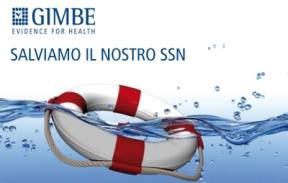All news by bronchiolitis
RSV, what’s happening? Ready to pay the immune debt, but maybe there is more about to know.
Respiratory syncytial virus (RSV) is an endemic virus, present throughout the world, the number one pathogen responsible for acute respiratory infections in children. In recent years something has led to a radical epidemiological change in the presentation of the virus, let's try below to understand what the real factors are that led to all this: immune debt or changed patterns of human-to-human contact? What role does the maturation of the child's airways actually play in limiting the risk of RSV infection?

Generally, children under 5 years of age are more involved and in particular newborns and children under one year of age, whose infection is often burdened by a higher rate of complications and hospitalizations, often requiring oxygen therapy.
In our latitudes, RSV is a highly seasonal virus, which strikes most in winter.
In the past, RSV infection tended to affect children older than one year progressively less, this is because it is known that repeated exposure to the virus generates a certain degree of immunity.
The regular seasonality of the virus, every year, affected newborns with an almost constant infection rate and guaranteed an equally constant rate of immunizations, an element which, associated with the intrinsic maturation of the development of the lower respiratory airways (a factor which in itself reduces the risk of infection), led to a progressive reduction in the number of cases of infected children above one year of life.
Starting from 2020, however, we have witnessed a complete reversal of the epidemiology of this virus, which initially practically disappeared throughout 2020, and which subsequently began to recur without following the usual seasonality, sometimes weeks or months before the usual epidemic, affecting cohorts of children of increasing age.
This last data is essentially due to the genesis, during the two-year period 2020-2021, of a large cohort of "naïve" children to RSV, given that it is defined by many as "immune debt", an assumption that must necessarily make us reflect on the wave now past of RSV of 2023 and on the possible waves of RSV that await us in the coming years.
Recent modeling studies have analyzed how the accumulation of this "immune debt", essentially due to all those measures that were put in place in the two-year period 2020-2021 to protect us from SARS-Cov2 infection, could cause increasingly earlier epidemics and more extensive, influencing the seasonality of the virus for some years to come.
In this regard, a recent study calculated that, in the absence of contact restrictions, the 2021-2022 season would have presented approximately 51% more hospitalized cases in all children under the age of 5 compared to pre-pandemic years, more pronounced increase in children older than one year of life.
Obviously, this is also compounded by the role that the changed winter climatic conditions have on the circulation of the virus and the inevitable increase in interpersonal contacts which has necessarily increased in the last two years, even if the current model of interpersonal contact would need to be investigated, which after the Covid-19 pandemic it inevitably changed, changing the pattern of human-to-human transmission of this and all circulating viruses.
An interesting aspect is that the suppression of infections in the two-year period 2020-2021 meant that the "exposure to the virus" factor was completely removed, but the airway maturation factor did not change, allowing us to better analyze what the role of the virus actually is. acquisition of immunity and that of airway maturation in defining the epidemiology of the infection.
The analysis of the data, made possible by this particular circumstance, allowed us to carry out further studies and to estimate the duration of immunity against RSV infection: from 7 months to 1 year (a figure made a little more complex by the partial immune evasion by its subtypes A and B).
However, our knowledge of what determines susceptibility to RSV disease in children remains incomplete.
What emerges from numerous studies would seem to lead us to think that the risk of reinfection is reduced in the presence of specific antibodies for RSV, even if other studies have shown that this acquired immunity may not be long-lasting enough to cover reinfection with the same strain in the season subsequent or in any case not enough institution to guarantee total coverage.
According to a cohort study including 635 children in Kenya, there was a 70% reduction in the risk of infection after the first and 59% reduction after the second infection for about six months; the severity of the infection was instead correlated to the age of the child.
In summary, the studies that correlate the role of age (and therefore the degree of maturation of the airways), the role of previous immunity and the increase in the infection rate are not many, but the majority of these seem to attribute a role limited to the age of the child in influencing the onset of the pathology (reduction in the risk of infection of less than 10% in children aged between 1 and 4 years compared to newborns) and a greater, but still marginal, role of acquired immunity (reduction in the risk of reinfection after a previous RSV infection which is between 25 and 70%).
This explains the phenomenon that occurred after the pandemic, older children fell ill with bronchiolitis, generally those who had never been exposed to the virus, because they were socially isolated during the pandemic.
What now has proven to be decisive and which really influences the transmission of this pathology are the so-called "models of human-to-human contact", which are capable of radically modifying the epidemiology of the pathology and this has been widely demonstrated with the SARS-pandemic. Cov2.
It is therefore necessary to reflect on this, because this is what we will be able to work on, especially at the level of preventive strategies, to return to modifying the impact that this pathology has and has had on our young patients.
BIBLIOGRAPHY
Mihaly Koltai,a,b,⁎ Fabienne Krauer,a,b David Hodgson,a,b Edwin van Leeuwen,a,b,c Marina Treskova-Schwarzbach,d Mark Jit,a,b and Stefan Flaschea,bDeterminants of RSV epidemiology following suppression through pandemic contact
Epidemics. 2022 Sep; 40: 100614. doi: 10.1016/j.epidem.2022.100614
Glezen W.P., Taber L.H., Frank A.L., Kasel J.A. Risk of primary infection and reinfection with respiratory syncytial virus. Am. J. Dis. Child. 1986;140:543–546. doi: 10.1001/archpedi.1986.02140200053026
Scott P.D., Ochola R., Ngama M., Okiro E.A., James Nokes D., Medley G.F., et al. Molecular analysis of respiratory syncytial virus reinfections in infants from coastal Kenya. J. Infect. Dis. 2006;193:59–67. doi: 10.1086/498246.
Ohuma E.O., Okiro E.A., Ochola R., Sande C.J., Cane P.A., Medley G.F., et al. The natural history of respiratory syncytial virus in a birth cohort: the influence of age and previous infection on reinfection and disease. Am. J. Epidemiol. 2012;176:794–802. doi: 10.1093/aje/kws257.
Zheng Z., Pitzer V.E., Shapiro E.D., Bont L.J., Weinberger D.M. Re-emergence of respiratory syncytial virus following the COVID-19 pandemic in the United States: a modeling study. 2021. 10.1101/2021.07.19.21260817.






